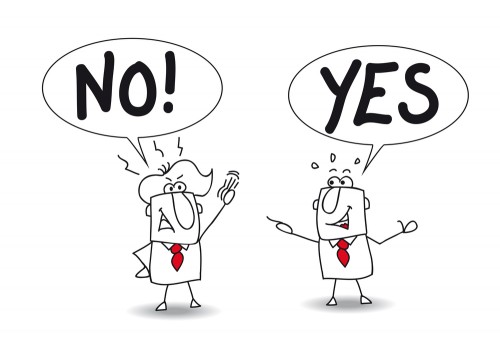Have you noticed this? At work, conversations can feel awkward, people aren’t always sure how to respond, or they walk away without understanding or connecting with a person. I’ve been reading about an interesting concept: The rules for improvisational theater can help you improve conversational skills at work. You can:
- Eliminate awkward silences
- Help make conversations flow smoothly
- Listen better
- Connect more deeply without effort
As you know, when you’re working great conversations don’t always happen spontaneously; you’re not always on the same wavelength as your partner. You can’t use a script or list questions to ask. Your success at conversations greatly improves your connections with others, and hence your success working in teams.
In the book Yes, And: How Improvisation Reverses “No, But” Thinking and Improves Creativity and Collaboration–Lessons from The Second City, by Kelly Leonard and Tom Yorton, the authors describe how players spontaneously engage in exchanges that are inspired.
In improv comedy, participants collaborate and support everyone, working towards a common goal. Players need to be flexible and carefully listen and observe the other person.
They don’t come on stage with expectations about where the scenario should end up. They watch for emotional signals and respond to everything presented, both non-verbally and verbally. Great conversations are created in the same way.
When you have a set agenda, you don’t listen or observe. If you are constantly debating, arguing, selling or trying to change minds, you can’t create a feeling of likability and collaboration.
What I’ve noticed when I’m working in organizations as a coach is that when people try to control the flow of conversation they miss out on important clues to what others are really thinking. Here is the first rule of improv comedy that you can apply to work conversations.
Rule # 1: “Yes, and…”
This is the first rule of improv: no matter what the other person says, you must respond with “Yes, and…” in order to build and expand the conversation. The key here is to accept what’s said — regardless of what you may think of it — and to add to it. It’s absolutely a foundation to improv.
We can understand why. When someone responds with “No,” or “Yes, but…” it shuts down the scene and it’s not funny. The same thing happens at work. Responding to another with “Yes, and…” is an easy concept to understand — but in actual practice it’s hard to commit to doing.
In my work as a coach, we practice this along with other guidelines for creating collaborative conversations that deepen connection with the people you work with.
So I’ll extend this challenge to you once more. This week, try to use the phrase “Yes, and…” as often as possible in your conversations. See what happens. Then share with me what that was like. If you’ve got questions, let’s talk. You can reach me here or on LinkedIn.

Did You Enjoy This Article?
Join thousands of other smart business owners like yourself & get our Proffittable Times newsletter.
It's filled with actionable content you can apply immediately.
Sign up now to get started!
– Coach Nancy










